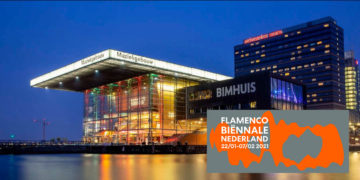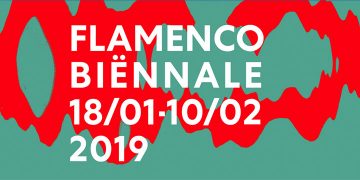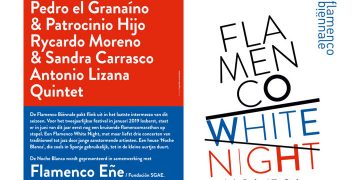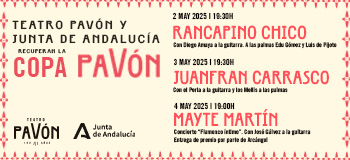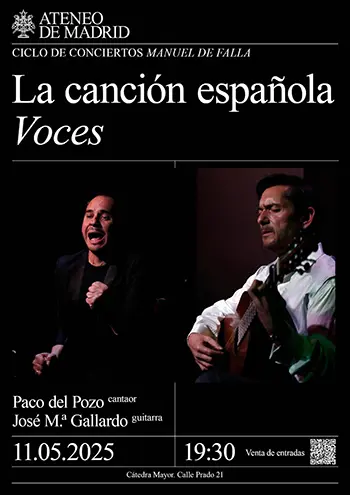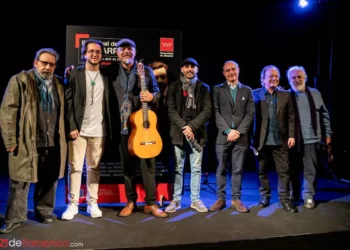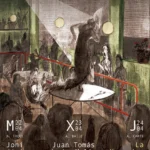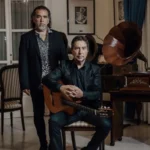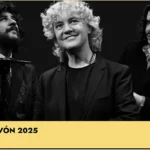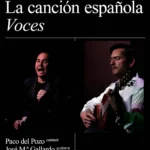|
|
|
Text: Estela Zatania Cante: Manuel Moreno Maya “El Pele”. Guitar: Antonio Luque Espejo ‘Patrocinio Hijo’. Palmas: Carlos Grilo, Luís Peña ‘Cantarote’. The Dutch Biennale continues to follow its dynamic course, and Friday night, with two degrees centigrade in the street, a “simple” recital of cante and guitar managed to attract hundreds of people to the café cantante of the cultural center along the IJ river. As far as flamenco goes, the Netherlands is in the process of discovering and learning, and thanks to this ambitious festival, the orientation is open and positive. Among the ample program of contemporary, daring and cross-cultural shows, there was room for one of the most uncomprising veterans of the current scene. Manuel Moreno “El Pele”, from Córdoba, belongs to the last generation of singers whose background is firmly anchored in oral tradition, but his permanently restless spirit lends a special freshness to everything he does. Although a staunch follower of Manolo Caracol, he never imitates, but rather takes inspiration from the work of that legendary singer. In actual fact, El Pele has that admirable quality so hard to find in the current generation of singers: a personality all his own. The well-constructed recital began with a lyrical guitar solo of taranta interpreted by Patrocinio Hijo who is the singer’s accompanist. Following this, our man makes his entrance, walking, singing a rambling verse to Manolo Caracol, with no apologies or complexes, with his unique, stylized and unmistakable delivery, grazing the sublime state of artistic dementia which is this singer’s trademark.
That admirable quality so hard to find in the current generation of singers: a personality all his own. The audience reaction is genuine and effusive, no one’s riding on star quality here, it’s just about art and communication at the most basic and direct level, without interference of any kind. In siguiriya, a difficult cante to interpret and assimilate, Pele undergoes a transformation, he becomes inspired by his own inspiration and moves through the cante in a way that seems to validate the very nature of this fundamental form of the flamenco repertoire. Compás, classic styles, set forms, everything is in place just waiting for a flamenco singer to come along and help himself to a structure that never lets you down, provided the interpreter knows the rules of the game. This is the most apt description of this singer, total obedience to the forms, combined with the most absolute spiritual innocence, and the floodgates of creativity flung wide open. It’s not an easy mental state to reach, and it requires deep knowledge upon which to construct one’s interpretations. Oddly enough, Pele plays whip-crack clean palmas in the guitar interludes between verses. “Oddly”, because in recent years it’s become fashionable to play siguiriyas with such exaggerated phrasing, it comes out as free as a granaína. It’s nice to be reminded that this is one of the rhythmic flamenco forms. The same controlled abandon, and there’s no contradiction in that phrase, continues to produce excellent results for malagueña with abandolao, and mining cante. “I don’t believe in duende, I believe in the heat of the psychic state” declares the singer, and by that point, we know exactly what he’s talking about. Soleá apolá “my way”, and very much his way, like everything else he does, recognizable classic styles with heaps of personality, no “museum pieces” nor fictitious “purity”, just cante worked the way it sounds best, renewed and enriched with each interpretation. With alegrías, Pele is the only singer who has managed to introduce new styles that “stuck” and are now sung by others, and once again he demonstrated his creative capacity in this form. The closing is bulerías, and even the Cordoban’s little dance is different. Seville, Jerez and Cádiz are far far away, but a fine sampling of good flamenco is being offered to warm up the cold Dutch nights within this “Biennale 2008”. |





